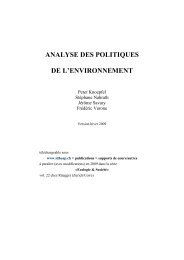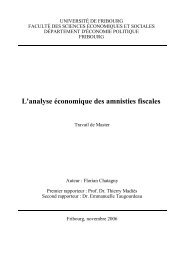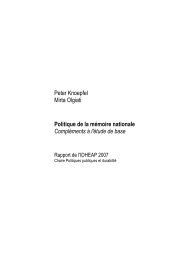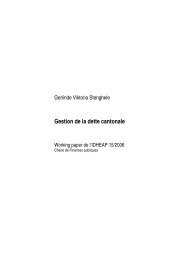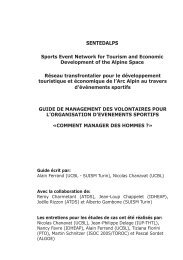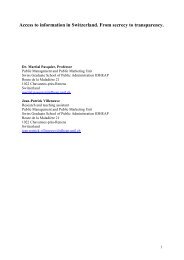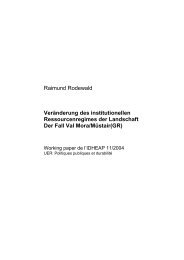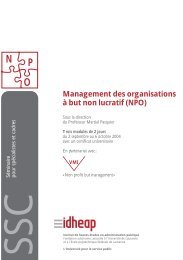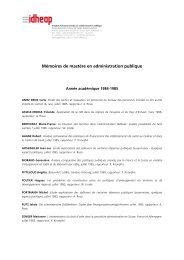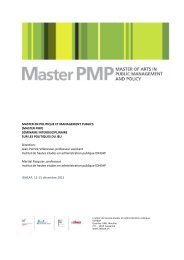Voting advice applications and party choice: evidence from ...
Voting advice applications and party choice: evidence from ...
Voting advice applications and party choice: evidence from ...
Create successful ePaper yourself
Turn your PDF publications into a flip-book with our unique Google optimized e-Paper software.
<strong>Voting</strong> <strong>advice</strong> <strong>applications</strong> <strong>and</strong> <strong>party</strong> <strong>choice</strong> 369<br />
For instance, they listed c<strong>and</strong>idates <strong>from</strong> different lists on their ballot papers (so-called<br />
“panaschieren” or split voting), or they listed c<strong>and</strong>idates twice <strong>and</strong> thus gave them two<br />
votes (so-called “kumulieren” or cumulative voting) (Ladner et al., 2010).<br />
Therefore, the Swiss results need to be interpreted against the background of the<br />
specific Swiss electoral system, <strong>and</strong> they cannot be directly compared with results <strong>from</strong><br />
other countries. In other countries, VAA users were asked whether the use of VAAs had<br />
led to voting for a <strong>party</strong> other than the one originally intended. The resulting figures vary<br />
strongly depending on the country. In the Netherl<strong>and</strong>s, between 10% (Kleinnijenhuis<br />
et al., 2008) <strong>and</strong> 15% of users (Aarts <strong>and</strong> van der Kolk, 2007) claimed to have adjusted<br />
their electoral decisions due to the recommendations received. For Germany, this figure<br />
is 6% (Marschall, 2005), <strong>and</strong> for Finl<strong>and</strong>, it is as low as 3% (Mykkänen <strong>and</strong> Moring,<br />
2006).<br />
The VAA researchers themselves view these findings rather critically. Most of the<br />
cited studies are based on pre-electoral surveys. Correspondingly, what is captured are<br />
voting intentions <strong>and</strong> not real voting decisions. A Belgian study captured both voting<br />
intentions <strong>and</strong> voting decisions for the users of the VAA Do De Stemtest! by means of<br />
comparing data <strong>from</strong> pre- <strong>and</strong> post-electoral surveys. Among those users who said that<br />
the Stemtest had convinced them to vote for another <strong>party</strong>, only two-thirds effectively did<br />
so in the end. This study, thus, concludes that the evaluation of voting intentions is a very<br />
unreliable measure of the impact of VAAs. Post-electoral questioning leads to more<br />
reliable results (Walgrave et al., 2008). In addition, there is also the problem of an overreporting<br />
effect – a problem inherent to all survey-based research.<br />
Considering this critique on the direct measurement of a VAA’s impact, we decided<br />
to try to measure the potential impact of VAAs by means of an indirect impact<br />
measurement. In this study, we will examine whether those users who stated that they<br />
were influenced by the voting recommendations have a higher probability of swingvoting<br />
in elections.<br />
In the following section, we present a few theoretical insights into the question of<br />
why it can be expected that VAAs affect their users’ electoral decision-making. The third<br />
section contains information about the datasetused, <strong>and</strong> the following sections present<br />
our empirical analyses. We conclude with a discussion <strong>and</strong> outlook for future VAA<br />
research.<br />
2 Theoretical considerations<br />
Since there is hardly any theoretical-oriented literature on VAAs to be found, we are<br />
bound to apply findings <strong>and</strong> debates <strong>from</strong> the general literature on electoral behaviour to<br />
gain some theoretical foundations concerning the question of the expected influence of<br />
VAAs on their users’ electoral decision-making.<br />
What determines the electoral <strong>choice</strong>s of voters? State-of-the-art theories on electoral<br />
behaviour stress – besides other factors such as <strong>party</strong> attachment <strong>and</strong> affection for<br />
c<strong>and</strong>idates– the crucial role of issue voting (Niemi <strong>and</strong> Weisberg, 2001, p.14). A large<br />
number of studies have shown the decisive importance of political parties’ issue positions<br />
on a voter’s electoral <strong>choice</strong>s [e.g. Alvarez <strong>and</strong> Nagler, 2000; Powell, 2000; Kriesi <strong>and</strong><br />
Sciarini, 2003 (for the case of Switzerl<strong>and</strong>), <strong>and</strong> Schoen <strong>and</strong> Weiss, 2005].



